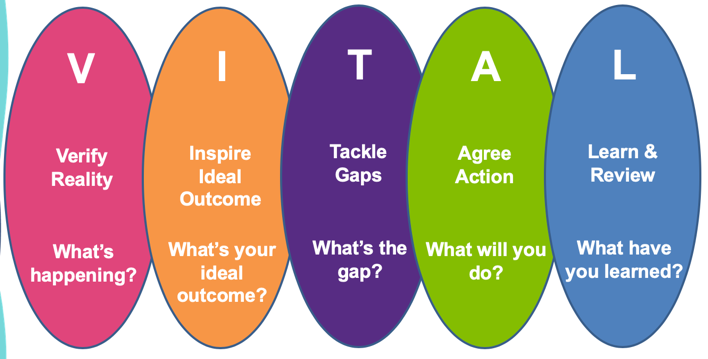One thing that will take your soft skills to the next level

As disruptive change becomes the new normal, the World Economic Forum (WEF) report, “The Future of Jobs”, predicts the top 10 most desired skills for the workplace of the future in order of priority are: 1. Complex problem solving 2. Critical thinking 3. Creativity 4. People management 5. Co-ordinating with others 6. Emotional intelligence 7. Judgement and decision making 8. Service orientation 9. Negotiation 10. Cognitive flexibility Five of these top ten skills can be categorised as “head-based”, brain power skills and five are more “heart-based” emotional intelligence skills. Future leadership will require a powerful blend of both. This blog will give you tips for leaders to refine their soft skills and to prepare them to embrace the future. Soft skills, such as collaboration, communication, listening, problem solving and adaptability are important because they are relevant in any job and position, independently from how different work will be in the future. Furthermore, they are essential for leaders as they connect and relate with people, who are their biggest and most expensive asset in the business. Being able to leverage and develop talent in a human way, not only a technical one, makes the biggest difference to a productive and effective organisation in a wider sense, affecting others too. The best way to improve your soft skills and your leadership is to practice “Vital Conversations”. In these conversations, one person asks questions and listens, while the other has the space to express themselves and proactively confront challenges they may be facing. V – verify reality The initial stage of a “vital conversation” establishes the current situation someone is facing. What are the challenges and opportunities in their current reality? Discuss what is working well and what might not be working for them at the moment. Ask them what impact are these challenges having on them and their life?
The initial stage of a “vital conversation” establishes the current situation someone is facing. What are the challenges and opportunities in their current reality? Discuss what is working well and what might not be working for them at the moment. Ask them what impact are these challenges having on them and their life?  I – inspire ideal outcome The second stage is about understanding the desired outcome and what difference it would make when they achieve it. Ask them specifically how their ideal world would look, feel and sound like. Make sure they focus on the benefits associated with the outcome, rather than the obstacles to get there. T – tackle the gaps
I – inspire ideal outcome The second stage is about understanding the desired outcome and what difference it would make when they achieve it. Ask them specifically how their ideal world would look, feel and sound like. Make sure they focus on the benefits associated with the outcome, rather than the obstacles to get there. T – tackle the gaps After they have a clear picture of their goal, you can talk about the gaps between now and the ideal. What barriers are there? Is something stopping them from taking action? If so, ask them about what they are afraid of, what are their limiting beliefs.
After they have a clear picture of their goal, you can talk about the gaps between now and the ideal. What barriers are there? Is something stopping them from taking action? If so, ask them about what they are afraid of, what are their limiting beliefs.  A – agree action Now you can talk about the actions they will make as a result of the conversation. Ask them what they could do to get closer to their goal, let them find their own solutions, as this will make them feel accountable to themselves. You could discuss how committed they are to the goal and the actions they need to take to achieve it. Finally, agree who will hold them accountable. L – learn and review
A – agree action Now you can talk about the actions they will make as a result of the conversation. Ask them what they could do to get closer to their goal, let them find their own solutions, as this will make them feel accountable to themselves. You could discuss how committed they are to the goal and the actions they need to take to achieve it. Finally, agree who will hold them accountable. L – learn and review Recap together what you have agreed, are they happy with the plan you have discussed? You could ask them what they will do differently now and what have they learnt. Don’t forget to discuss how they will know when they have been successful and what they will do to celebrate their achievement. It is good to practice the soft skills involved in this type of conversation, not just for yourself, but also for the other person. You will have to listen attentively and develop emotional intelligence to ask the appropriate questions depending on the answers you hear. The other person will use their problem solving and creativity to think about solutions for their own challenges. You will reach a deeper level of communication with your team and you will manage others in a softer but more effective way, as people will feel supported and listened to, motivated and held accountable. For more information on VITAL conversations, click here. To learn more about leadership development, visit https://fullpotential5.wpengine.com/leadership-development/.
Recap together what you have agreed, are they happy with the plan you have discussed? You could ask them what they will do differently now and what have they learnt. Don’t forget to discuss how they will know when they have been successful and what they will do to celebrate their achievement. It is good to practice the soft skills involved in this type of conversation, not just for yourself, but also for the other person. You will have to listen attentively and develop emotional intelligence to ask the appropriate questions depending on the answers you hear. The other person will use their problem solving and creativity to think about solutions for their own challenges. You will reach a deeper level of communication with your team and you will manage others in a softer but more effective way, as people will feel supported and listened to, motivated and held accountable. For more information on VITAL conversations, click here. To learn more about leadership development, visit https://fullpotential5.wpengine.com/leadership-development/.



